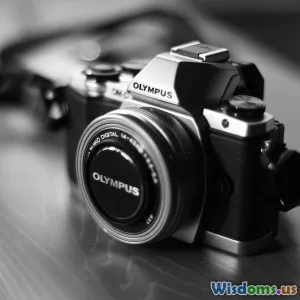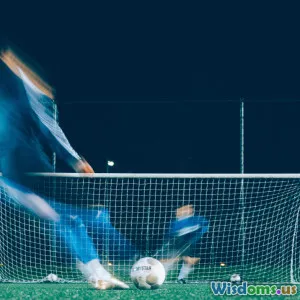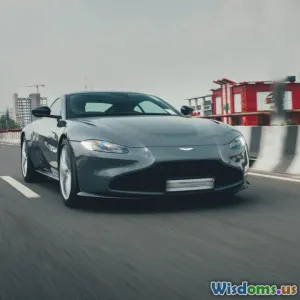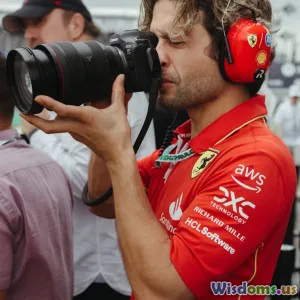
Comparing Mirrorless Vs DSLR for Action Shots
14 min read An in-depth comparison of mirrorless vs DSLR cameras for capturing stunning action shots. (0 Reviews)
Comparing Mirrorless Vs DSLR for Action Shots
When lightning-fast moments demand picture-perfect precision, photographers turn to two primary technologies: mirrorless and DSLR cameras. But which type reigns supreme when capturing adrenaline-pumping action? Is traditional mirrored mastery still relevant, or has the sleek mirrorless revolution taken the crown? This detailed comparison dives into every facet of using mirrorless versus DSLR cameras for action shots, analyzing their performance, features, and field experiences.
Introduction
Action photography - whether capturing roaring sports cars, explosive wildlife moments, or gripping athletic events - puts immense pressure on a photographer's gear. The rapidity of focus shifts, the necessity for continuous shooting speeds, and the reliability in the heat of the moment require a camera system that can deliver without hesitation. Historically, DSLR (Digital Single-Lens Reflex) cameras have dominated this niche for decades, trusted by professionals for their ruggedness and precision.
However, mirrorless cameras, boasting sleek designs and cutting-edge electronics, have become increasingly popular over the past decade. With impressive advances in autofocus systems and burst rates, mirrorless systems aim to outpace DSLRs at the very performance metrics crucial to action shots.
This article explores the crucial criteria influencing action photography—autofocus speed and accuracy, frame rates, shutter lag, viewfinder experience, battery life, and durability—to help photographers make an informed choice.
Understanding the Tech: DSLR vs Mirrorless Basics
Before delving deeper, it’s essential to understand how DSLR and mirrorless cameras fundamentally differ, impacting their suitability for fast-paced shooting.
DSLR:
- Utilizes a mirror and pentaprism/pentamirror system to an optical viewfinder.
- The mirror flips up during exposure, allowing light to hit the sensor and capture the photo.
- Generally larger and heavier due to the mirror mechanism.
Mirrorless:
- Eliminates the mirror system entirely.
- Uses an electronic viewfinder (EVF) or the rear LCD screen for composing images.
- Typically more compact and lighter.
These structural differences influence autofocus systems, shooting speed, handling, and image preview—crucial elements driving performance in action photography.
Autofocus Performance: Tracking Fast and Erratic Subjects
Autofocus (AF) speed and accuracy are paramount in action photography. Capturing sharp images while subjects dart unpredictably requires sophisticated technology.
DSLR Autofocus:
DSLRs traditionally rely on phase-detection autofocus sensors positioned in the camera body. This system is known for its speed and accuracy, especially when using the optical viewfinder.
-
Advantages:
- Reliable AF tracking in good lighting
- Superior eye and face detection on flagship models
- Performance consistent in bright environments
-
Limitations:
- AF points often limited to center area, requiring “focus-and-recompose” for off-center subjects
- Mirror-up mechanism introduces slight delays in AF during burst shooting
Mirrorless Autofocus:
Mirrorless cameras utilize on-sensor phase detection (or hybrid systems), allowing more AF points spread across the frame.
-
Advantages:
- Extensive AF point coverage across the entire sensor
- Superior tracking abilities with AI-driven subject recognition
- Eye and animal eye AF available even during video and continuous shooting
- Almost zero shutter lag increases responsiveness
-
Limitations:
- Early models struggled in low-light conditions, though recent generations significantly improved.
Real-world Insight:
Nikon’s Z9 mirrorless flagship boasts 493 AF points and an advanced deep-learning autofocus system that tracks athletes throughout rapid movements, outperforming many DSLRs. Pro photographers covering professional sports such as soccer and basketball increasingly recommend mirrorless bodies for their superior AF tracking capabilities.
Burst Shooting and Buffer Capacity
The ability to shoot multiple frames per second (fps) without significant slowdown is critical to capturing the perfect action moment.
DSLR Capabilities:
High-end DSLRs like the Canon EOS-1D X Mark III can shoot burst rates up to 16fps with full AF and exposure tracking.
- Often equipped with large buffers that allow hundreds of JPEGs before slowdown.
- Mirror flipping mechanism limits the theoretical maximum fps compared to electronic shutter options.
Mirrorless Capabilities:
Mirrorless cameras can leverage electronic shutter technology to reach significantly higher burst rates.
- Sony A9 IV offers up to 20fps silent shooting with continuous autofocus.
- Larger buffers or speedy UHS-II card support minimizes lag.
- Electronic shutter eliminates mechanical delay, enabling faster continuous capture.
Example:
A wildlife photographer capturing birds in flight benefits from Sony’s silent shutter technology that also prevents scaring the subjects—a distinct advantage for mirrorless systems.
Viewfinder Experience and Compositional Feedback
DSLR Optical Viewfinder (OVF):
Provides a through-the-lens optical view with zero latency and natural color rendition.
- Advantage: Real-time, lag-free composition under all lighting conditions.
- Limitation: No exposure preview or focus peaking.
Mirrorless Electronic Viewfinder (EVF):
Offers a digital display of exactly what the sensor captures, including exposure preview, histograms, and focus aids.
- Advantage: Immediate exposure feedback, focus confirmation with peaking/accentuation, and face detection overlays.
- Limitation: Potential for minimal lag or blackout in extreme shooting modes, though this has been reduced in recent models.
Professional sports shooters indicate that EVFs, while initially less favored, have evolved to provide excellent situational awareness during fast shooting.
Durability, Ergonomics, and Battery Life
Durability:
DSLR bodies often benefit from years of engineering focused on ruggedness, weather sealing, and reliability under harsh conditions.
- Example: Canon 1D series and Nikon D5/6 used extensively in demanding environments.
Mirrorless cameras have closed much of the gap, especially high-end models like the Panasonic Lumix GH6 and Nikon Z9, both engineered for tough use.
Ergonomics:
- DSLRs usually have larger grips, preferred for heavy telephoto lenses common in sports/wildlife photography.
- Mirrorless cameras often prioritize compactness; some users might find grip smaller but add-on options are available.
Battery Life:
- DSLR cameras generally have superior battery life due to low-power optical viewfinders.
- Mirrorless cameras consume more power because of EVFs and LCD use.
- However, usage patterns and battery innovations have mitigated this difference somewhat.
Image Quality and Lens Ecosystem
Image Quality:
Both systems feature large APS-C or full-frame sensors delivering excellent image quality.
- Mirrorless cameras benefit from newer sensor designs and typically better in-body image stabilization.
- DSLRs have maturity in color science and noise management.
Lens Ecosystem:
- DSLR systems boast decades of high-quality lenses, especially telephoto optics ideal for distant action shots.
- Mirrorless systems are quickly building their lens lineups with lightweight and optically advanced designs, many incorporating image stabilization at the lens level.
Lens choices have become less of a limiting factor over time.
Making the Choice: Which Is Right for You?
To decide which camera type suits your action photography needs, consider these points:
| Factor | DSLR | Mirrorless |
|---|---|---|
| Autofocus | Fast, accurate, proven systems | Cutting-edge, widespread AF coverage, AI tracking |
| Burst Rate | High fps but limited by mechanical mirror flipping | Higher fps with silent shooting and electronic shutter |
| Viewfinder | Optical, zero lag, natural view | Electronic, exposure preview, focus peaking |
| Durability | Robust, weather-sealed models | Improving rapidly with pro-grade bodies |
| Battery Life | Superior battery endurance | Shorter battery life; multiple batteries customary |
| Lens Selection | Extensive, established ecosystem | Growing, innovative designs available |
User Profiles:
- Sports Photographer on Deadline: Mirrorless systems’ superior autofocus and burst rates give an edge in unpredictable play.
- Wildlife Shooter in Harsh Environments: DSLRs still offer excellent durability and battery longevity, valuable in remote locations.
- Hybrid Shooter (Photo & Video): Mirrorless cameras offer seamless video integration and advanced autofocus for multimedia work.
Conclusion
The battle between mirrorless and DSLR cameras for action shots is not about which technology is obsolete or superior universally—both have distinct strengths. Mirrorless cameras have surged forward in autofocus innovation, frame rates, and real-time preview functionality, making them increasingly favored for the dynamic demands of action photography.
However, DSLRs endure with their rugged design, optical viewfinders, and battery efficiency, retaining a loyal following among professionals. Ultimately, photographers must weigh personal preferences, shooting conditions, and budget to select a system that empowers capturing those fleeting moments with confidence and clarity.
With continuous advancements, the gap closes rapidly. Whether you hold a mirror or reflect through a mirror, the right gear is the one that best helps you immortalize the energy of the moment.
References & Further Reading:
- DPReview comparisons on Canon EOS-1D X Mark III vs Sony A9 II
- Nikon Z9 press release and technical specifications
- Photographers’ forums: practical reviews on AF tracking and burst shooting
- Technical articles on EVF vs OVF latency measurements
- Wildlife photography blogs highlighting benefits of silent electronic shutters
Rate the Post
User Reviews
Popular Posts




















